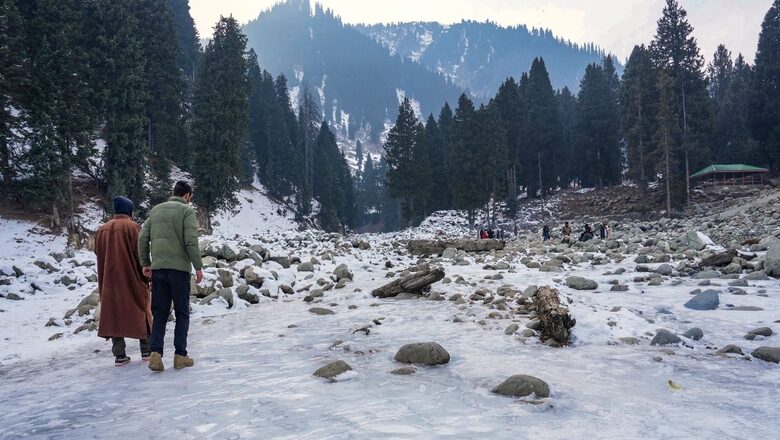
views
A feeble western disturbance is likely to affect Jammu and Kashmir on Friday with a possibility of light snowfall over isolated places in the higher reaches, according to the meteorological department. Minimum temperatures in Kashmir rose marginally due to cloud cover.
Feeble western disturbances are likely to affect Jammu and Kashmir on Friday and January 17 evening. Under the influence of these western disturbances, generally cloudy weather with light snowfall over isolated places in the higher reaches is expected, the meteorological department in Srinagar said.
A dry winter in Kashmir has resulted in freezing nights and warmer-than-usual days. Day temperatures in Srinagar were more than 6 degrees Celsius above the normal for this time of the year.
The Valley continued to experience sub-zero night temperatures with the mercury settling below the normal for this time of the year. Srinagar city recorded a minimum temperature of minus 4 degrees Celsius on Thursday night a notch up from the previous night.
Qazigund recorded a low of minus 4.2 degrees and the ski resort of Gulmarg recorded a low of minus 3.2 degrees Celsius. Pahalgam in south Kashmir’s Anantnag district, which serves as one of the base camps for the annual Amarnath Yatra, recorded a minimum temperature of minus 5.3 degrees Celsius.
The minimum temperature in Kokernag town settled at minus 2.4 degrees Celsius, while it was minus 4.4 degrees Celsius in Kupwara. Kashmir is currently under the grip of “Chilla-i-Kalan”, a 40-day harsh winter period during which a cold wave sweeps the region and temperatures drop considerably leading to the freezing of water bodies as well as water in pipes.
The chances of snowfall are the highest during this period and most areas, particularly the higher reaches, receive heavy snowfall. Kashmir has been going through a prolonged dry spell and a 79 per cent rain deficit was recorded for December. There was no precipitation in the first week of January.
There has been no snowfall in most plains of Kashmir while the upper reaches have received lesser-than-usual amounts of snow. ‘Chilla-i-Kalan’ will end on January 31. However, the cold conditions will continue after that with a 20-day ‘Chilla-i-Khurd’ (small cold) and a 10-day ‘Chilla-i-Bachha’ (baby cold).
















Comments
0 comment